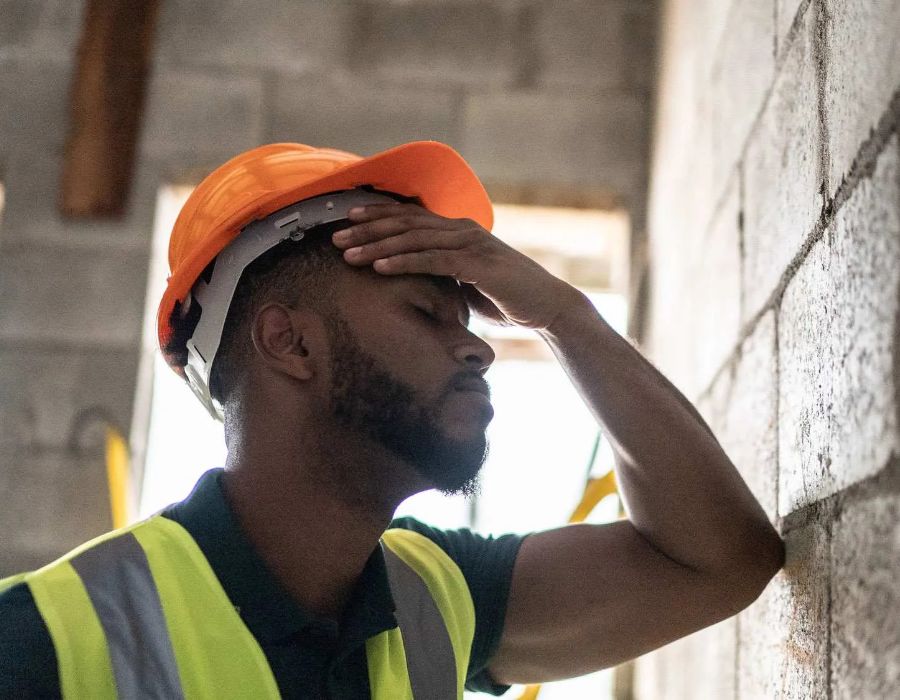The Occupational Safety and Health Administration is stepping up its enforcement efforts around excavation and trenching safety and heat-related illnesses. With a push to inspect worksites for violations and an impending standard for protecting workers from heat, here is what the construction industry needs to know.
Increasing numbers of deaths from excavation-related incidents and heat exposure prompted the Occupational Safety and Health Administration (OSHA) to focus its 2022 National Emphasis Program (NEP) on preventing future worker deaths from these hazards. In July, the agency announced that it would conduct more than 1,000 trench inspections by the end of the year and is moving closer to adopting a workplace heat injury and illness prevention standard.1
In the first half of 2022, more construction workers died in trenching incidents than in all of 2021.2 Excavation and trenching is among the construction’s industry’s most hazardous work, with cave-ins and collapses from improperly sloped and shored trenches contributing to worker injuries and deaths each year.
The number of deaths from occupational heat in the past decade has nearly doubled from the 1990s.3 With 2022 expected to be one of the hottest years on record, outdoor jobs have become more dangerous — especially in construction.4
Reduce risk of worker injuries and potential OSHA fines
Although accidents happen, construction firms that adhere to strict rules for inspecting and monitoring excavating activities and put common-sense safety measures in place can reduce the risk of employee injury, illness or death from trenching or heat. Employers should:
Know the rules. Make sure foremen adhere to OSHA’s detailed excavation regulations, which includes inspecting trenches daily and stopping the work of subcontractors who fail to adequately protect trenches as required by OSHA standards. Although OSHA only has guidelines for protecting workers from heat-related hazards, with a rule forthcoming, employers should adopt best practices and pay attention to OSHA letters of interpretation for adoption of “the general duty clause” to issue citations for heat related injury.
Develop a heat-illness policy. Heat-related illness is 100% preventable, often presenting as cramps, heat exhaustion, profuse sweating, severe headaches or vomiting as the body temperature rises.
Ensure supervisors are aware of the signs of heat stroke and schedule mandatory breaks for outdoor workers’ rest and hydration when work is performed in temperatures above 80 degrees Fahrenheit. Make sure break areas are shaded, and that workers are not punished for taking necessary rest.
Make inspections a priority. Inspect trenches at the beginning of every shift since weather conditions could change conditions in the trench. Don’t forget to assess whether such factors as water intrusion have impacted stability. Use this same attention to detail to ensure workers have adequate hydration nearby and that the conditions of the worksite are monitored, including temperature and humidity.
Prepare for the worst. Construction firms should have emergency response plans in place that cover a range of scenarios, including a trench collapse or a heat stroke situation. Outline strategies to mitigate the injuries or illnesses before help can arrive.
Contact HUB International’s construction insurance experts to learn more about construction site safety.
1Fisher Phillips, “Adding Fuel to Fire: OSHA Focuses on Trenching Inspections – Even on Weekends – With Heat Program Still in Force,” July 15, 2022.
2The American Industrial Hygiene Association, “As Fatalities Rise, OSHA Targets Trenching Work,” July 21, 2022.
3Pew Trusts, “Scorching Heat Is Killing Workers. Some States Are Stepping In,” August 23, 2021.
4Grid, “The planet is on fire, but 2022 won’t crack the top 5 list of warmest years on record,” July 20, 2022.
Article sourced on Hub International website. Click here to view



